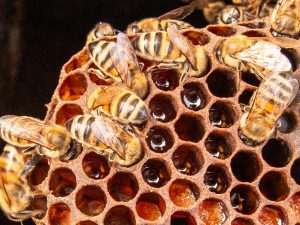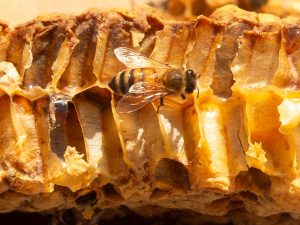Thanks to a copious flowering, the bees housed in the 18 beehives of Orti di Mare (Lacona – Island of Elba) collected a lot of nectar with which they produced an abundance of honey; we were therefore able to harvest some of it, which you will find for sale in our Rural Restaurant -Market Café area. The production of honey by the bees, our harvesting and honey extraction, the ripening and finally the packaging took place on the estate, within a radius of 500 metres from where you can buy the honey.
The honey was analysed by an independent laboratory (Piana Ricerca di San Piero – Bologna) with quali-quantitative and organoleptic pollen analysis. Analyses show that it is multi-flower honey, liquid, aromatic, warm, normally sweet, slightly acidic, with no perceptible bitterness and no organoleptic defects. Bees fly up to 3 km from their hive and settle on many species of flowers, all of which produce pollen while only a part produces nectar. Pollen analysis has identified 38 types of pollen, 26 of which come from melliferous and 12 from non-melliferous plants. Among the former are (in descending order) heather, gorse, cruciferous, alaternus, melilotus, viburnum, echium and others; among the latter (in descending order) marine cistus, villous cistus, sage-leaved cistus, olive, holm oak, rose, lentisk and others. The head of the melliferous plants (heather) and the non-melliferous ones (cistus) are the biological “signature” left by the Mediterranean maquis in our honey.



